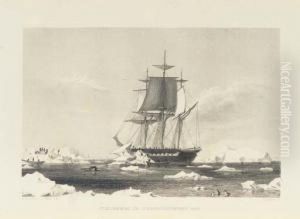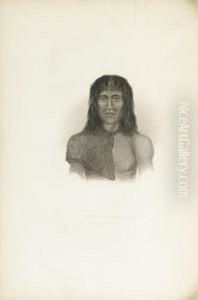Charles Wilkes Paintings
Charles Wilkes was not primarily known as an artist, but rather as a naval officer and explorer. Born on April 3, 1798, in New York City, he joined the United States Navy as a midshipman in 1818 and developed a strong interest in naval science and exploration. Throughout his career, he became most famous for leading the United States Exploring Expedition, also known as the Wilkes Expedition, from 1838 to 1842. This expedition was one of the largest voyages of discovery in the history of the world and significantly contributed to scientific knowledge of the time.
Wilkes's expedition charted numerous islands in the Pacific, explored the coast of Antarctica—which led to the recognition of the continent—and collected over 60,000 plant and bird specimens. The biological, botanical, and geological discoveries made during this expedition were foundational to the development of American science, particularly in the establishment of the Smithsonian Institution.
While Wilkes had a significant impact on the knowledge of his time, his career was also marked by controversy. He was court-martialed upon his return to the United States for losing one of his ships and for the harsh discipline he imposed on his crew during the expedition. Despite this, he was promoted to the rank of rear admiral on the retired list in 1866.
Charles Wilkes passed away on February 8, 1877, in Washington, D.C. While he did not leave a legacy as an artist, his contributions to navigation, cartography, and exploration were invaluable. His work provided a wealth of material for naturalists and scientists, and his detailed reports and maps enriched the fields of geography, zoology, and botany. Wilkes's life was dedicated to expanding the boundaries of the known world and the United States' role in scientific exploration.

